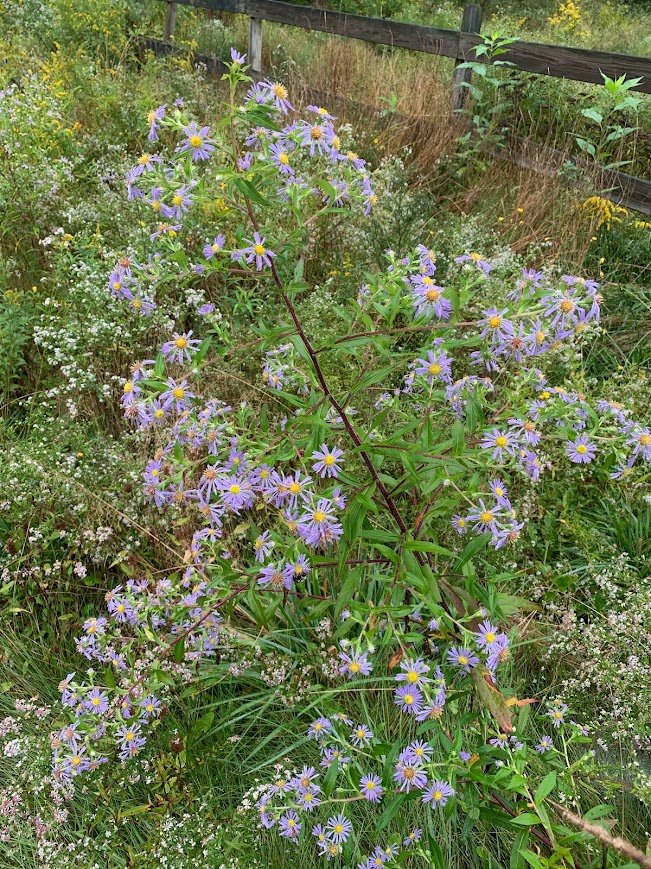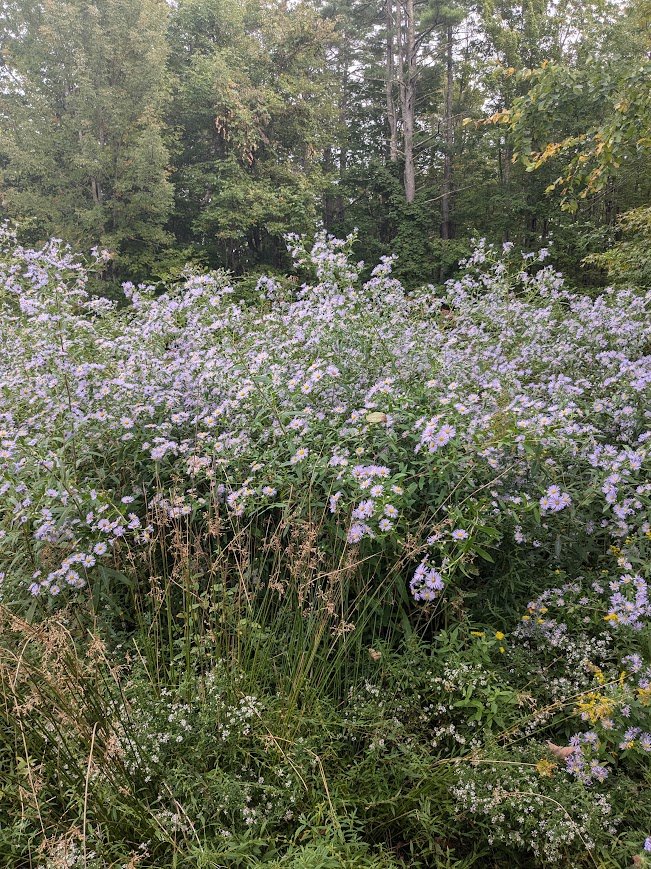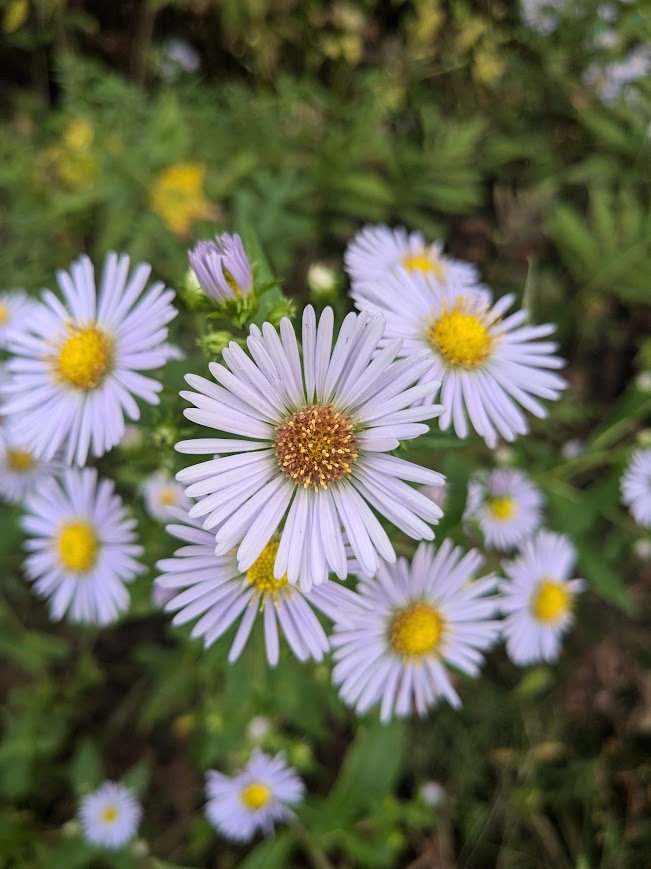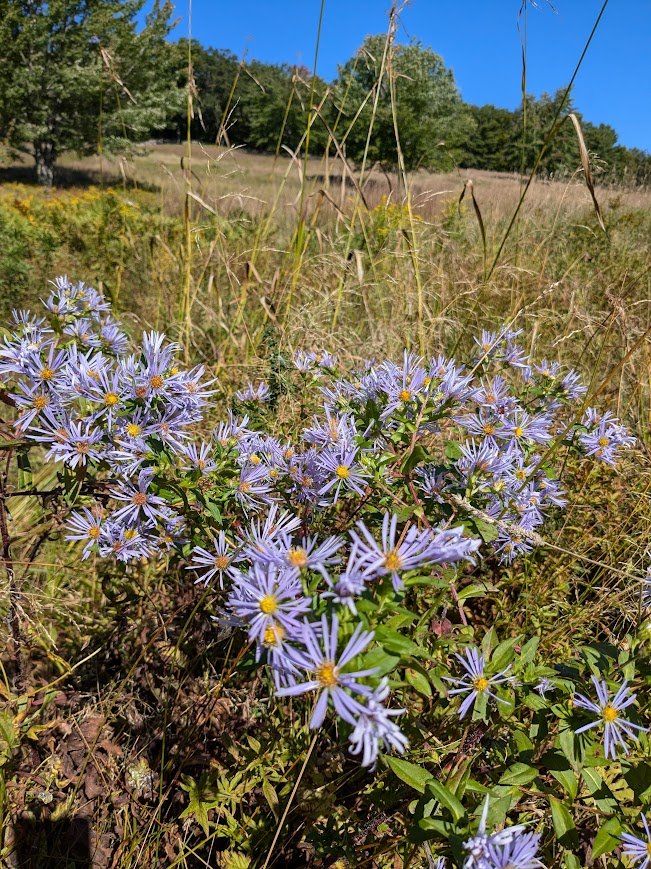 Image 1 of 4
Image 1 of 4

 Image 2 of 4
Image 2 of 4

 Image 3 of 4
Image 3 of 4

 Image 4 of 4
Image 4 of 4





Swamp Aster - Bare Root Plant
(Symphyotrichum puniceum)
Pink flowers, purple stems, and green leaves. These are the colors that compost the striking swamp aster, a late blooming native flower that grows large herbaceous stalks and can form immense colonies. As its name implies, this plant prefers wet to moist conditions, although it will grow well in drier soils. Insects flock to this plant in late summer to early fall when other nectar sources are somewhat limited. We have observed bumblebees, wasps, flies, and butterflies sharing this plant at the same time.
Asters are somewhat underutilized as garden plants, but this and the New England Aster are excellent choices for late season blooms.
Hardiness: Zone 2-9
Soil: Wet to moist fertile soils
Light: Full sun to part shade
Options:
Bare Root Plants can be planted into loose soil in the Fall or Spring and kept moist until new growth emerges.
(Symphyotrichum puniceum)
Pink flowers, purple stems, and green leaves. These are the colors that compost the striking swamp aster, a late blooming native flower that grows large herbaceous stalks and can form immense colonies. As its name implies, this plant prefers wet to moist conditions, although it will grow well in drier soils. Insects flock to this plant in late summer to early fall when other nectar sources are somewhat limited. We have observed bumblebees, wasps, flies, and butterflies sharing this plant at the same time.
Asters are somewhat underutilized as garden plants, but this and the New England Aster are excellent choices for late season blooms.
Hardiness: Zone 2-9
Soil: Wet to moist fertile soils
Light: Full sun to part shade
Options:
Bare Root Plants can be planted into loose soil in the Fall or Spring and kept moist until new growth emerges.

